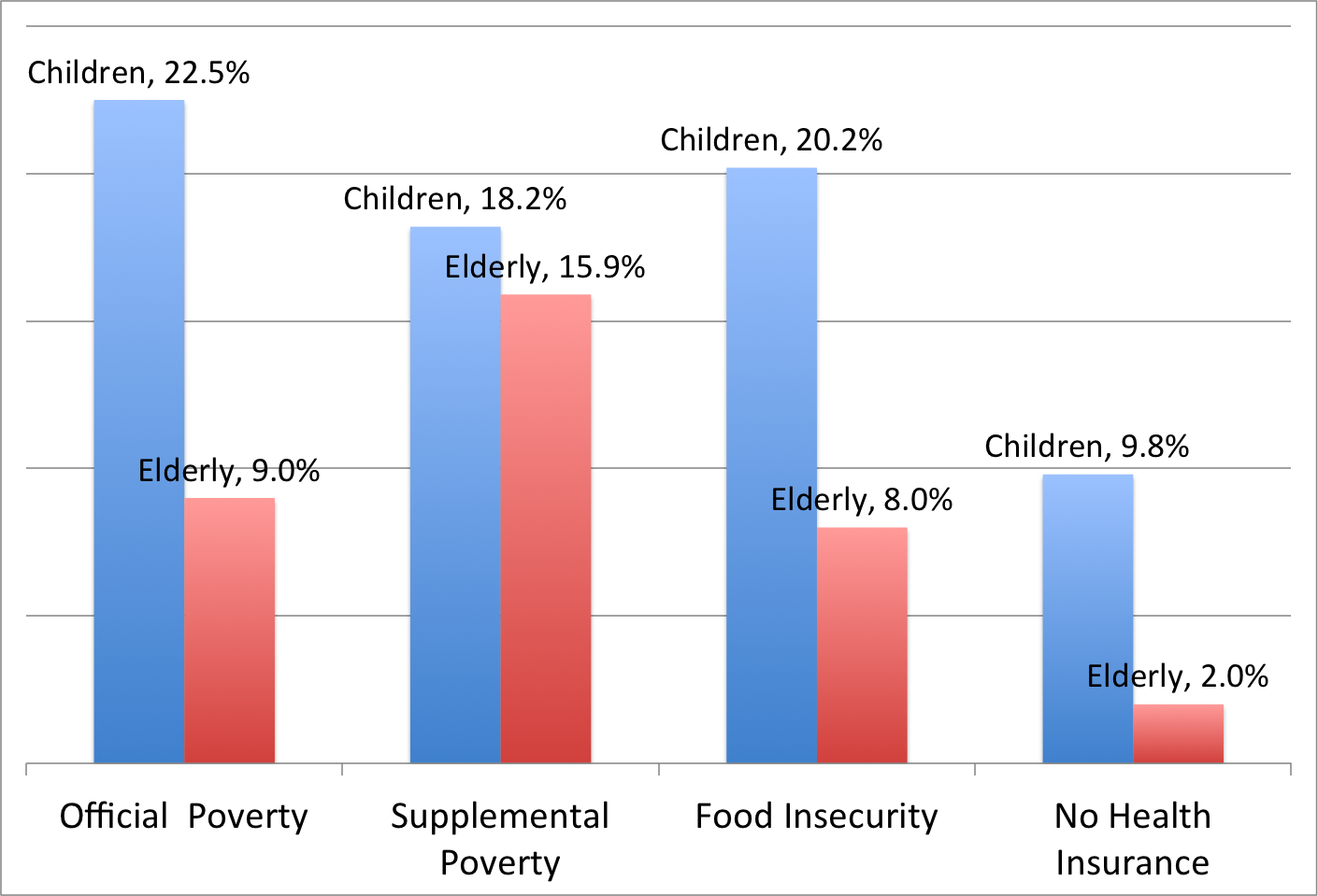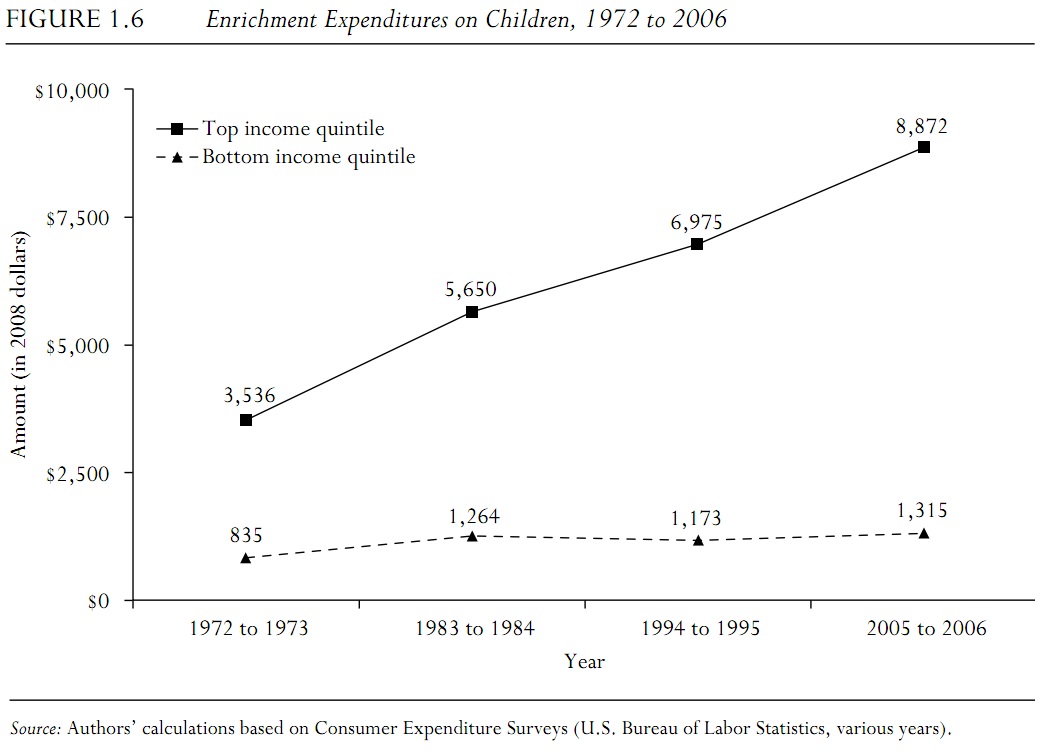August 03, 2012
The official poverty measure has numerous flaws. Most notably, what I’ll call the “old PM” has defined deprivation down since the 1960s because it has not kept pace with changes in typical living standards in the United States. As a result, the old PM’s poverty threshold is far too low as a measure of the resources Americans need to meet basic needs in today’s economy.
The new Supplemental Poverty Measure, what I’ll call the “new PM”, is often touted as providing a more accurate picture of poverty in the United States than the old PM. However, the poverty threshold established by the new PM is not adequate as a measure of basic needs. In fact, in many parts of the United States, the new PM threshold will actually be lower than the current threshold. Thus, as Mark Levinson of the SEIU wrote recently in The American Prospect, the new PM “doesn’t fix the fundamental problem” with the old PM.
That said, the new PM seems to improve on the old PM in other important, albeit less fundamental ways. In particular, it counts the Earned Income Tax Credit and various other important benefits that are not currently counted as income by the old PM, and subtracts certain work expenses and health care expenses that people are able to pay out of pocket. This certainly provides a more accurate calculation of total (post-tax, post-benefit) income minus out-of-pocket spending on child care and health care, but does it provide a more accurate picture of poverty?
Not necessarily, particularly when we look at child poverty. To see why not, it is useful to compare how using the new PM changes the picture of poverty among children and the elderly. As the table below shows, using the old PM, the child poverty rate (22.5 percent) is more than twice as high as the elderly poverty rate (9 percent). But using the new PM, the rates look very similar because the child poverty rate drops by more than 4 points, while elderly rate jumps by nearly 7 percentage points. In essence, according to the new PM, child poverty is significantly lower than we thought, while elderly poverty is much higher. And, comparing the two groups, children are only slightly worse off in terms of having their basic needs met than the elderly.

Is this picture painted by the new PM more accurate than the one painted by the old PM? One way to check is by comparing the ratio of elderly/child poverty under both measures to a direct measure of basic needs deprivation. The most established one we have is the official measure of food insecurity, which measures the extent to which people have access at all times to enough food for an active, health life. Since food is the most basic need, and a central part of what both the old and new PMs are supposed to be measuring, this seems like a good comparison.
The chart below compares child and elderly poverty rates with food insecurity. (The food insecurity rates in the chart are the percentages of food-insecure households with children or elderly persons.) I’ve also added the uninsurance rate, another hardship measure. As the chart shows, the ratio of the child/elderly food insecurity rates (2.5) is much more consistent with the elderly/child poverty ratio as measured using the old PM (2.5), than it is with the ratio using the new PM (1.1).

Judged by this criterion at least, the new PM seems either to have gotten the elderly poverty rate too high or the child poverty rate too low. In my view, all the evidence points to the latter, that is, the new PM gets elderly poverty right—it is worse than we thought—but substantially underestimates the level of child poverty.
Why might this be? I think one of the major reasons is that the new PMs largely fails to take children’s basic needs for care and healthy development into account. These needs are not built into the new PM’s poverty threshold, and they are largely not captured by substracting out-of-pocket spending by parents on work-related child care and medical care. For the elderly, who nearly all have health insurance, subtracting ouf-of-pocket medical spending does a better job of capturing their care needs.
This major flaw in the new PM’s approach to measuring child poverty is particularly important in light of recent research on growing inequality in parental spending on children’s development. The chart below, from Whither Opportunity? Rising Inequality, Schools and Children’s Life Changes, an important new volume from the new Russell Sage Foundation, shows how spending on child-enrichment goods and services jumped for families in in the top income quintile, while remaining largely unchanged for families in the bottom income quintile.
.

A modern framework for measuring poverty and economic security would not assume that children and the elderly have exactly the same basic needs—it would define poverty by taking into account the specific and differing basic needs of each group. Unless the new PM takes these and other basic needs of children into account, it will continue to define deprivation down for America’s children over the next several decades.
PS: For a detailed study of hardship differences by age, see John Mirowsky and Catherine E. Ross’s Economic Hardship across the Life Course in the American Sociological Review. They attribute relative lower hardship rates for the elderly than for children to Social Security and Medicare and suggest that “the crucial difference [may be] between the universal coverage extended to seniors and the means-testing applied to parents.”






